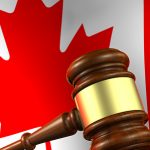Selling Consumer Products in Canada. What else do you need to consider?
By: Kirsten Alcock, Manager of Product Safety, email
When selling a consumer product in Canada there are many factors to consider. Who is your market? Are you making any claims? Have you tested your product to determine if it can even be sold here? The requirements for Canada are not the same as in other countries. One needs to be sure that they know the requirements before selling.
Today I will touch briefly on the Toy Regulations for Canada. Many companies do not know that such regulations exist. If children are the intended audience for your product, not only do you need to comply with the Consumer Chemicals and Containers Regulations (CCCR) but also with the Toy Regulations.
The regulations refer to the requirements for a variety of different types of toys, what chemicals are banned, and also the test methods that must be used in testing a product intended for use by children. For example, in the recalls the public receives, many dolls recalled due to the faulty nature of their eye attachment. Schedule 4 provides a test method for determining the security of the attachment of eyes and noses to dolls.
The latest list of recalls can be found here.
What we deal with here at Dell Tech are the toxicological hazards that Health Canada has deemed non-compliant. A toy must not contain any of the following substances if the child could (under reasonably foreseeable circumstances), obtain access to these chemicals:
- carbon tetrachloride or any substance that contains it;
- methyl alcohol or any substance that contains more than 1% weight to volume of methyl alcohol;
- petroleum distillates or any substance that contains more than 10% weight to volume of petroleum distillates;
- benzene;
- turpentine or any substance that contains more than 10% weight to volume of turpentine;
- boric acid or salts of boric acid; or
- ethyl ether.
The regulations also go into more stringent standards when they discuss specific substances in surface coatings.
The surface coating material that is applied to a toy must not contain any of the following substances:
- more than 90 mg/kg of total lead;
- a compound of antimony, arsenic, cadmium, selenium or barium if more than 0.1% w/w of the compound dissolves in 5% hydrochloric acid after being stirred for 10 minutes at 20°C (68°F); or
- a compound of mercury.
Another common issue we find is with products that are considered corrosive, irritant or sensitizing. If a toy contains a substance that is capable of coming into contact with the skin because of the nature or characteristic of the toy, the substance MUST NOT be an irritant, corrosive or sensitizing when assessed in accordance with Schedule 3.
If you are in the process of formulating your products for an intended market of children in Canada, please ensure that you are checking these lists. The above list is not a full, complete list of all ingredients that cannot be in children’s’ toys. Be sure to check the Toys Regulations in full to determine what is acceptable in Canada.
Please feel free to contact us for further information on our consumer label consulting services. We can help keep your products in compliance with the regulations for Canada and elsewhere. We are happy to advise or help when you are in the formulation stage of your product, before a huge investment has been put into a formulation that cannot be sold here.
Contact:
Dell Tech
Kirsten Alcock, B.Sc. (Hons)
Manager, Product Safety Group
519-858-5074
kirsten@delltech.com





